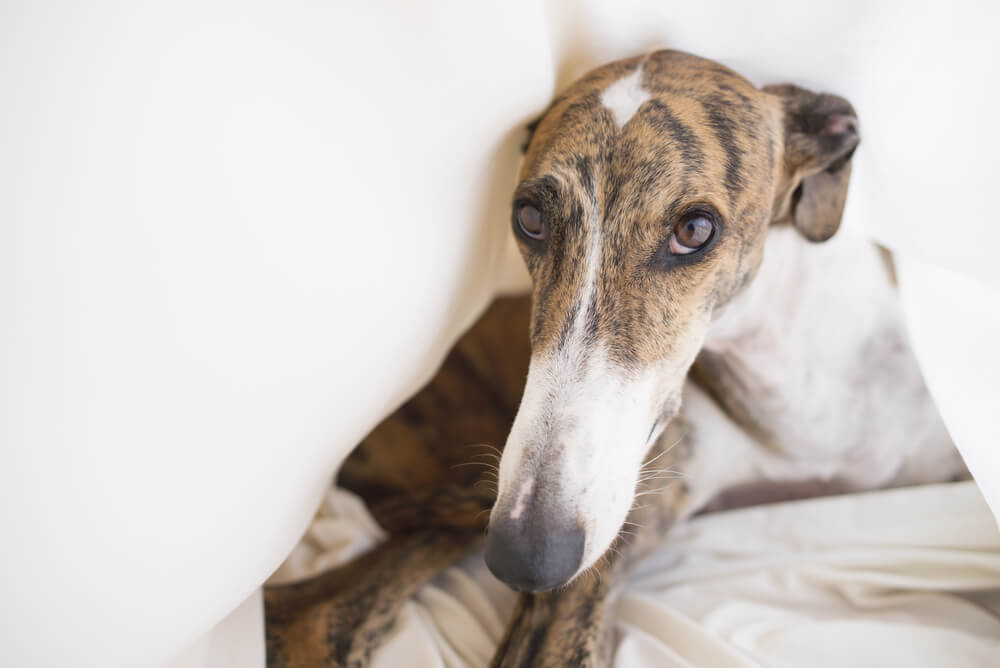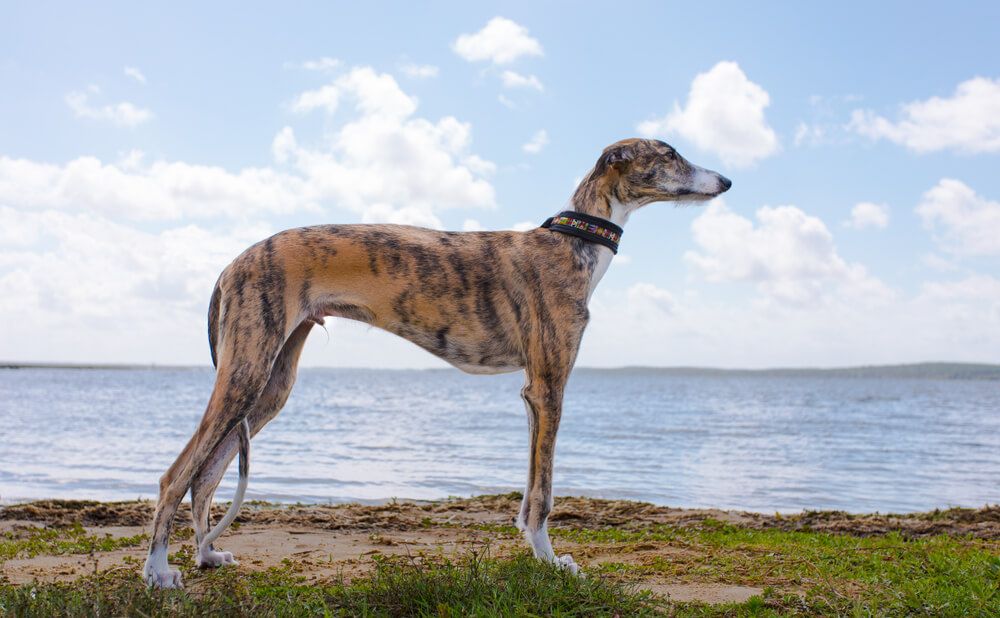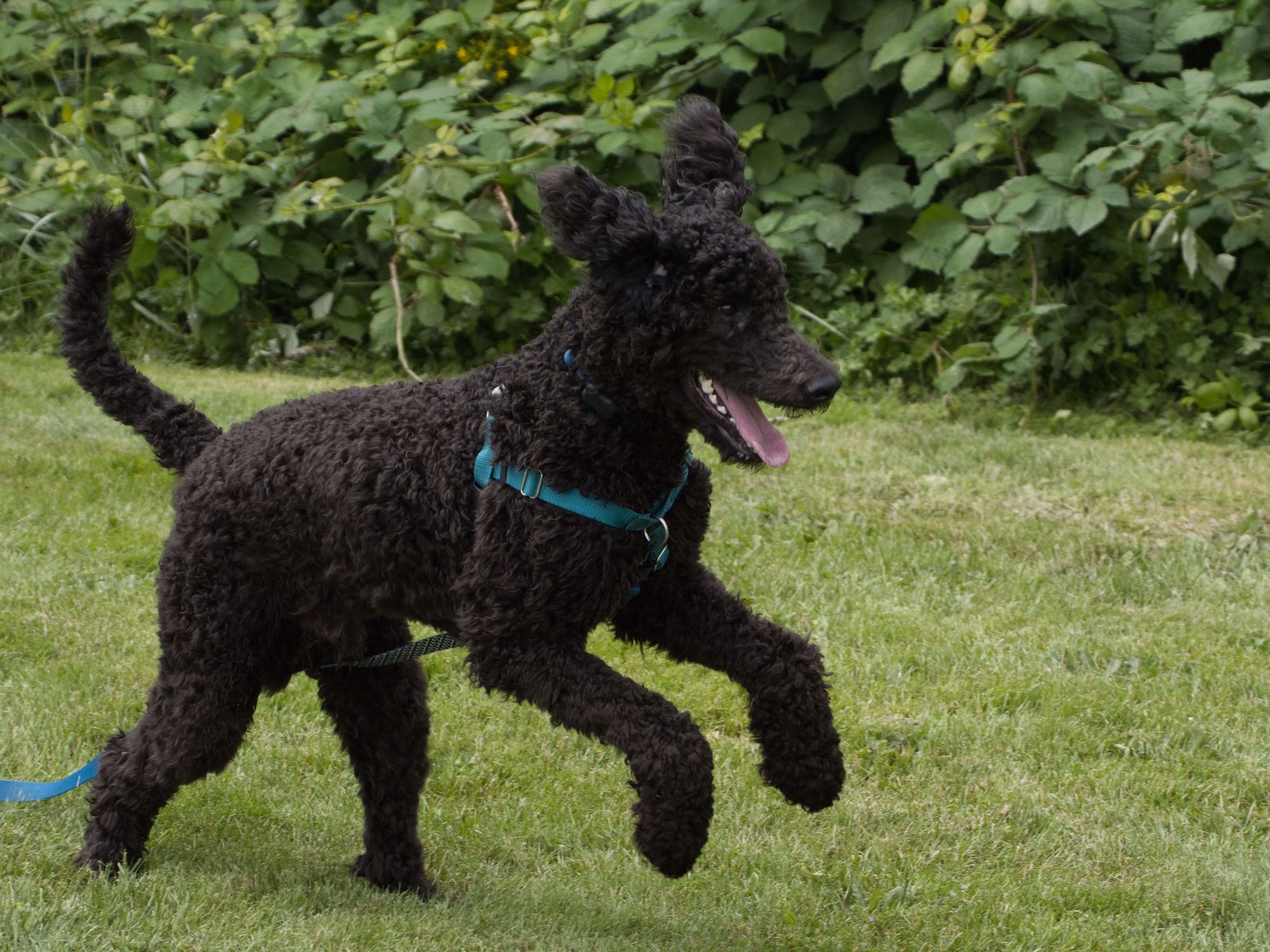Hey Ollie blog readers! We’re offering you an exclusive 60% OFF your starter box! Try now!
The Greyhound is a breed with a rich history and an endearing temperament. These elegant dogs are beloved companions to many families around the country. Could a Greyhound be your new best friend? Read on if you want to find out if a this breed is a good fit for your family and lifestyle!

Meet the Greyhound
The first recorded Greyhounds, from which all modern pedigree Greyhounds are descended, appeared in kennel club and racing registries in the United Kingdom. The Greyhound is likely descended from a herding type dog and is thought to have originated alongside the Celts. However, there is evidence of the Greyhound’s ancestors going back thousands of years.
Today, the Greyhound is widely known as a racing breed. The American Kennel Club says, “Greyhounds are the essence of the dog breeder’s credo ‘Form follows function.’ From the narrow, aerodynamic skull to the shock-absorbing pads of the feet, Greyhounds are perfectly constructed for high-speed pursuit.”
The breed gained this reputation for speed in the 1920s, when Greyhound racing became popular in the U.S., England, Ireland, and Scotland. These dogs were recognized for their immense speed across short and middle distances. Racing continues to be popular despite a sordid reputation, though many local and state bans are impacting the industry. Rescue groups often work to secure the dogs’ exit from the industry as they age or can otherwise no longer race.
Prior to the early 20th century, the breed was primarily used for coursing, or hunting animals like hares, foxes, or deer out in the open. In this type of hunt, the Greyhound was able to leverage its excellent eyesight and speed to its utmost potential. Today, however, Greyhounds are more likely to be found in the home as a companion animal than on the hunt.

Physical characteristics of the Greyhound
The typical Greyhound, as described by the American Kennel Club, stands between 27 and 30 inches tall. Male Greyhounds tend to be slightly larger than females. Both sexes have a life expectancy of between 10 and 13 years.
One look at a Greyhound reveals their natural inclination toward speed and agility. Greyhounds are long, thin animals with narrow skulls that can easily be described as aerodynamic. A thin, sleek waist complemented by long, lean legs enables the Greyhound to take off at a moment’s notice and maintain an elegant, gaping stride for some distance. It’s recommended to keep Greyhounds on a leash while outdoors for this reason. (And if you’re a first-time pet parent, check out Ollie’s blog on best tips for leash-training your dog.)
Greyhounds may be prone to obesity if they aren’t getting enough exercise. These pups should weigh between approximately 60 and 70 pounds, or as advised by your veterinarian. To keep your Greyhound at a healthy weight, be sure to feed them protein-filled meals made of high-quality animal products such as beef or chicken. Ollie’s custom meal plan service provides the exact amount of food your Greyhound needs with each feeding to stay at its ideal, healthy weight.
Greyhound Personalities
According to the American Kennel Club, Greyhounds tend to be gentle animals that are independent. However, Greyhounds are well-known for their loyalty and intelligence, likely developed in their years as a hunters’ companion. The American Kennel Club also notes the nobility of the Greyhound, a trait that has long captivated artists of all mediums who sought to capture the animal’s dignity in their work.
Greyhounds are generally regarded as calm dogs that remain quiet and graceful in indoor environments. They are generally happy to curl up and relax somewhere warm and comfortable. While these traits are optimal for inside a home, the Greyhound does need ample exercise and significant space to exert those bursts of speed for which it is so famous. Greyhounds don’t take long to tire out though; they are the sprinters of the canine world. A good-sized, fenced in yard, trips to the dog park, or a walk or jog should be more than enough for a Greyhound to get the daily workout it needs to stay fit.

Are Greyhounds good family pets?
Greyhounds make excellent family pets, though they tend to thrive in a relatively quiet and relaxed environment. Greyhounds seldom bark and they like their surroundings similarly calm. They often do well in homes with other medium or large dogs. However, they have a powerful chase instinct, which can be an issue in homes with cats or small dogs. They can do well in a home with children so long as they are acclimated properly. If your home is high-energy or you already have other pets, you may want to consider a different breed that’s a good fit for families.
Greyhounds are not an aggressive breed. In fact, they are quite the opposite: Greyhounds generally freeze up when challenged. They are easily scared, though, especially when touched unexpectedly. Basically, your Greyhound will appreciate it if you reciprocate the quiet, relaxed, and peaceful manner which it exudes.
Are Greyhounds good for first time dog owners?
Yes! Greyhounds are an excellent breed for prospective dog owners that are looking for a loyal, dignified companion to stretch out on the couch with or play a quick game of fetch. Nothing says “chill” like a Greyhound, unless of course a squirrel darts by just asking for a good chase. With a little bit of exercise, some basic obedience training and a lot of love, a Greyhound will be right at home.
The Ollie blog is devoted to helping pet parents lead healthier lives with their pups. If you want to learn more about our fresh, human-grade food, check out MyOllie.com.
Tagged As:

The nutrition your dog needs,
the food they want.

Enjoying our articles? Subscribe our Newsletters and get new articles directly to your inbox
You might also like
18 September 2025
7 MINS READ
Shih Tzu Breed Guide: Shih Tzu Pros and Cons
Thinking about bringing home a Shih Tzu? This guide breaks down the breed’s personality, grooming needs, and whether it’s the right fit for your life.
21 July 2025
6 MINS READ
Poodle Breed Guide: Pros and Cons of Poodles
Curious about Poodles? This detailed Poodle breed guide breaks down the key pros and cons, plus tips on caring for Standard, Miniature, and Toy Poodles.
25 March 2025
6 MINS READ
Yorkie Dog Breed Guide: Yorkie Pros & Cons
Thinking about adding a Yorkie to your family? This Yorkie dog breed guide covers the pros and cons, care tips, and what to expect with these tiny, spirited pups.







